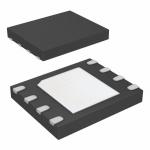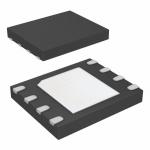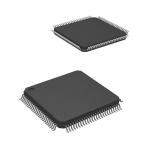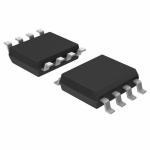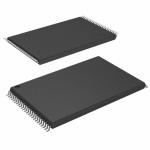TMS320F28335PTPQ Mosfet Power Transistor DSP, DSC Delfino
Micrcntrlr 1 Features 1 High-performance static CMOS technology – Up to 150 MHz (6.67-ns
cycle time)
– 1.9-V/1.8-V core, 3.3-V I/O design High-performance 32-bit CPU (TMS320C28x) – IEEE 754 single-precision Floating-Point Unit (FPU) (F2833x only) – 16 × 16 and 32 × 32 MAC operations – 16×16dualMAC – Harvard bus architecture – Fast interrupt response and processing – Unified memory programming model – Code-efficient (in C/C++ and Assembly)
Six-channel DMA controller (for ADC, McBSP, ePWM, XINTF, and SARAM) 16-bit or 32-bit External Interface (XINTF) – More than 2M × 16
address reach On-chip memory – F28335, F28333, F28235: 256K × 16 flash, 34K × 16 SARAM – F28334, F28234: 128K × 16 flash, 34K × 16 SARAM – F28332, F28232: 64K × 16 flash, 26K × 16 SARAM – 1K×16OTPROM
Boot ROM (8K × 16) – With software boot modes (through SCI, SPI, CAN, I2C, McBSP, XINTF, and parallel I/O) – Standard math tables
Clock and system control – On-chip oscillator
– Watchdog timer module GPIO0 to GPIO63 pins can be connected to one of the eight external
core interrupts Peripheral Interrupt Expansion (PIE) block that supports all 58
peripheral interrupts 128-bit security key/lock
– Protects flash/OTP/RAM blocks
– Prevents firmware reverse-engineering
• Enhanced control peripherals – Up to 18 PWM outputs – Up to 6 HRPWM outputs with 150-ps MEP resolution – Up to 6 event capture inputs – Up to 2 Quadrature Encoder interfaces – Up to 8 32-bit timers (6 for eCAPs and 2 for eQEPs) – Up to 9 16-bit timers (6 for ePWMs and 3 XINTCTRs) • Three 32-bit CPU timers
• Serial port peripherals – Up to 2 CAN modules
– Up to 3 SCI (UART) modules
– Up to 2 McBSP modules (configurable as SPI) – One SPI module
– One Inter-Integrated Circuit (I2C) bus • 12-bit ADC, 16 channels
– 80-ns conversion rate
– 2 × 8 channel input multiplexer
– Two sample-and-hold
– Single/simultaneous conversions – Internal or external reference • Up to 88 individually programmable, multiplexed GPIO pins with
input filtering • JTAG boundary scan support
– IEEE Standard 1149.1-1990 Standard Test Access Port and Boundary Scan Architecture • Advanced emulation
features – Analysis and breakpoint functions – Real-time debug using hardware • Development support includes
– ANSI C/C++ compiler/assembler/linker – Code Composer StudioTM IDE – DSP/BIOSTM and SYS/BIOS – Digital motor control and digital power software libraries
• Low-power modes and power savings – IDLE, STANDBY, HALT modes supported – Disable individual peripheral clocks • Endianness: Little endian
|

